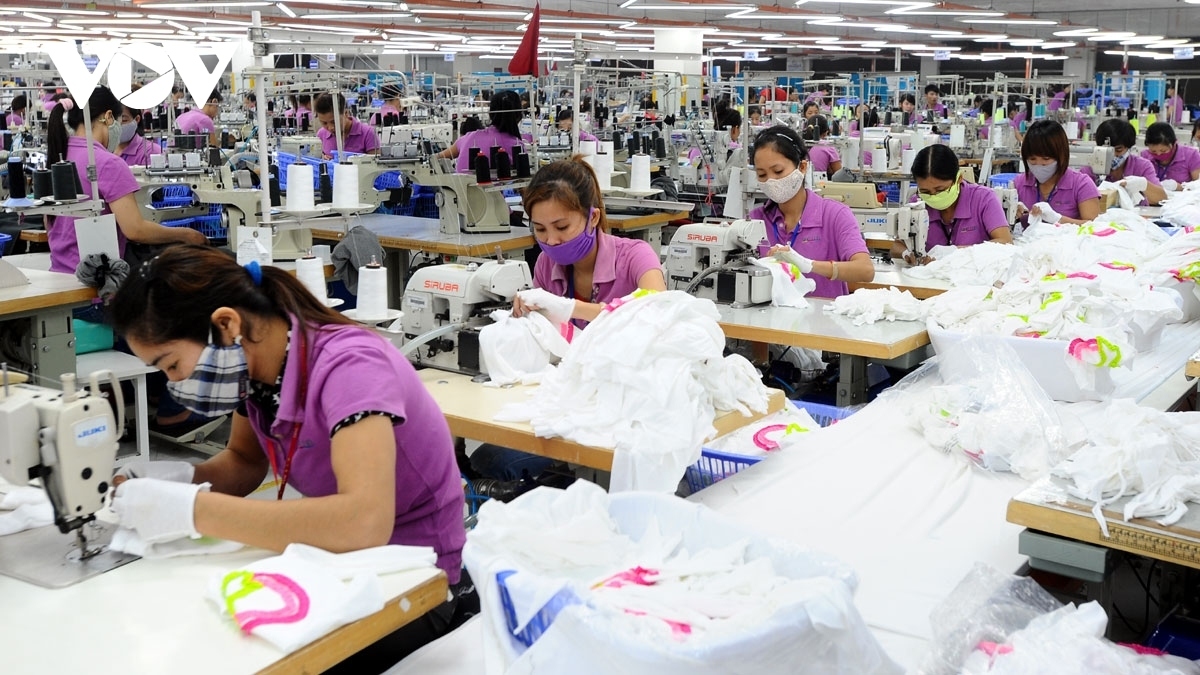Textile and garment export turnover in the first six months of 2022 reached more than 22 billion USD, showing a strong recovery of the industry with a growth of 23% over the same period last year. This result is obtained because the enterprise has actively adapted and adjusted its production and business plan effectively. Along with that, increasingly taking advantage of opportunities from international economic integration and FTAs, in which, a number of binding agreements on rules of origin have promoted the industry. Textile yarn in developed countries.
However, since the middle of the second quarter, fluctuations in the market and inflation in the world are slowing down this growth momentum. Accordingly, demand for textiles and garments is on a downward trend due to rising inflation, consumers tend to tighten spending after the epidemic, greatly affecting orders of businesses. Currently, most businesses only sign orders until the end of the third quarter, some units sign until October. A few units have had enough orders until the end of the year but faced many difficulties.
Mr. Than Duc Viet, General Director of Garment 10 Corporation, said that in the first 6 months of this year, the Corporation's production and business results were relatively positive. Customers in the US and European Union markets had a quick recovery, so the number of orders increased compared to the same period last year. However, in the second half of the year, inflation increased in some important export markets, causing the purchasing power of textiles and garments to tend to decrease.

Textile enterprises worried about the lack of orders at the end of the year?
According to Mr. Than Duc Viet, although the Corporation had orders until the end of the third quarter, a number of strong products had orders until the end of the year, but if the market consumed slowly, the inventory ratio of importers would be reduced. If the import volume increases, the customer can adjust the reduction or cancel the order suddenly. Meanwhile, the negative impact of the pandemic has not been resolved, the price of gasoline, raw materials and fuel costs increased, causing production costs to increase, and the profit margin of enterprises became increasingly narrow.
“We are facing a big difficulty that is the story of high prices of raw materials and input materials. Specifically, an increase in coal prices, an increase in gasoline prices and an increase in transportation services along with gasoline prices will greatly affect business performance in the last 6 months of 2022, possibly until 2023. - Mr. Than Duc Viet said.
The global economy is forecasted to have low growth due to the protracted Russia-Ukraine conflict. Inflationary pressures have led to an increase in unemployment and a decrease in apparel spending. According to a survey, up to 40% of Americans said they would cut spending on clothing, but the bright spot at this time is that the disease has been basically controlled, commercial activities and services are still under control. , tourism reopened. In that context, the challenge for the textile and garment industry is that raw materials and fuel prices have increased.
Mr. Nguyen Xuan Duong, Chairman of the Board of Directors of Hung Yen Garment Corporation, said that textile and garment enterprises need to be proactive and diversify their sources of goods to stabilize production as well as cooperate with suppliers to find new sources. substitute goods to meet the requirements of the import market. On the other hand, the State needs to have supportive mechanisms and policies for enterprises to expand the market.
“In the last 6 months of the year, there is a situation where a lot of orders are not confirmed immediately and with confirmation, the price is very low, the textile industry without orders will also face the problem of workers having to stop working. job. This creates difficulties for the textile industry, especially the textile and garment industry with a large number of workers. Enterprises want to somehow support capital so that businesses can have money to pay wages to employees in the future, "- Mr. Nguyen Xuan Duong suggested.
Chairman of the Vietnam Textile and Apparel Association Vu Duc Giang predicted that in the second half of this year, the world market will have unpredictable fluctuations, posing many challenges for businesses in the entire textile and garment industry. In the context of difficult to predict the current world economic situation, businesses need to implement many solutions to proactively produce raw materials, while ensuring sufficient order fulfillment. At the same time, it is necessary to closely follow information and market developments, grasp the requirements of the market of the importing country in order to make appropriate adjustments.
“We have trade agreements that are a driving force, this is also a solution to reduce tariff lines and attractive enough for investment solutions in Vietnam's textile and garment industry. Secondly, we also have the initiative in some input materials, so the difficulty will be reduced, maintaining purchasing power in global textile products. We also have solutions for adapting to some high-end product lines and difficult products, differentiated products, special products, which have an impact on promoting equipment innovation. technology adapts to new product lines," said Mr. Vu Duc Giang.
Unpredictable movements of the market, continuously increasing prices of raw materials and accessories are not small challenges for textile enterprises. Therefore, businesses must develop flexible solutions to cope with and promptly adapt to market signals so that they can be proactive in promoting production and export of goods, promoting growth and accomplish the set goals.
Ba Toan/VOV1